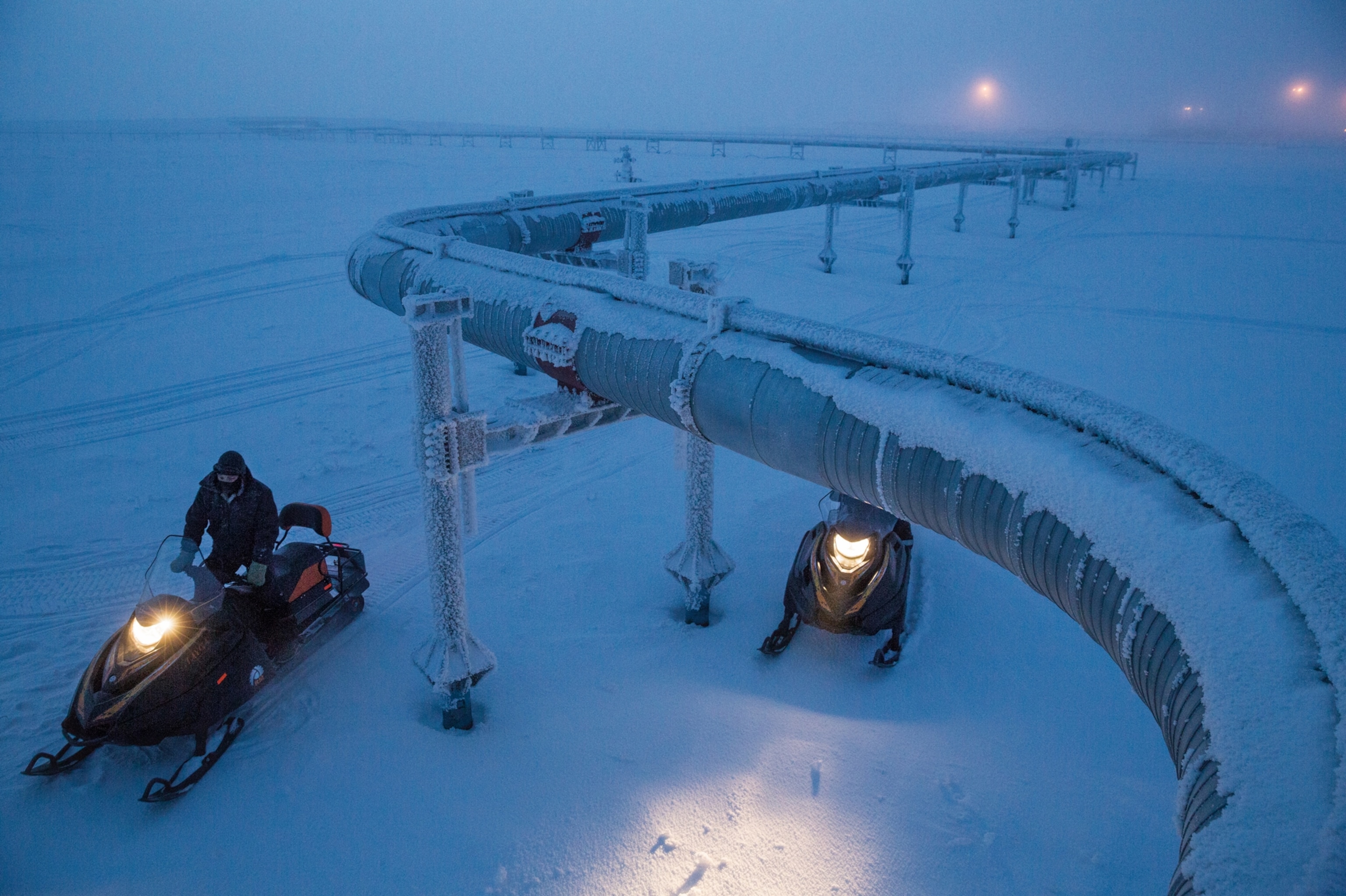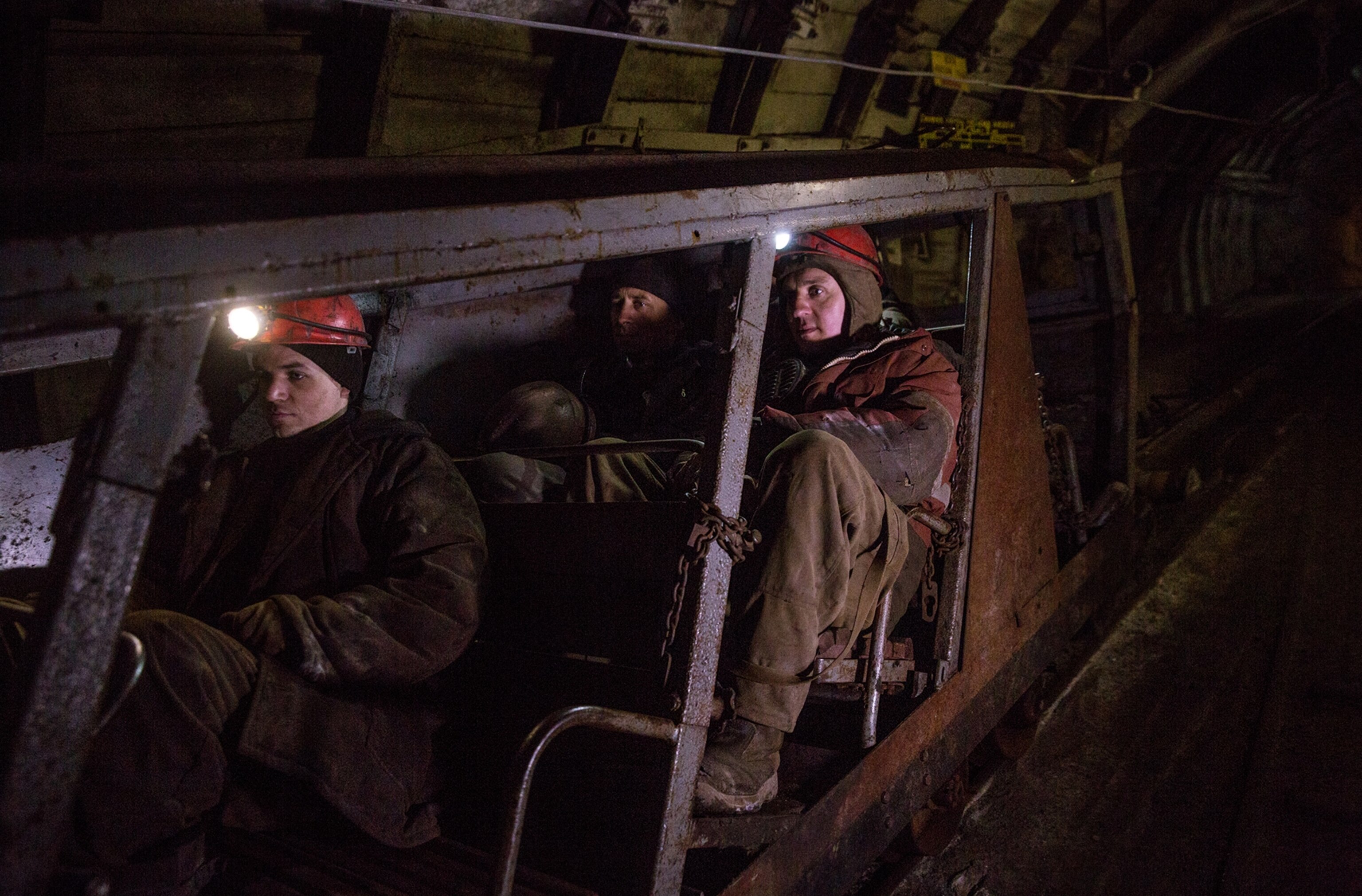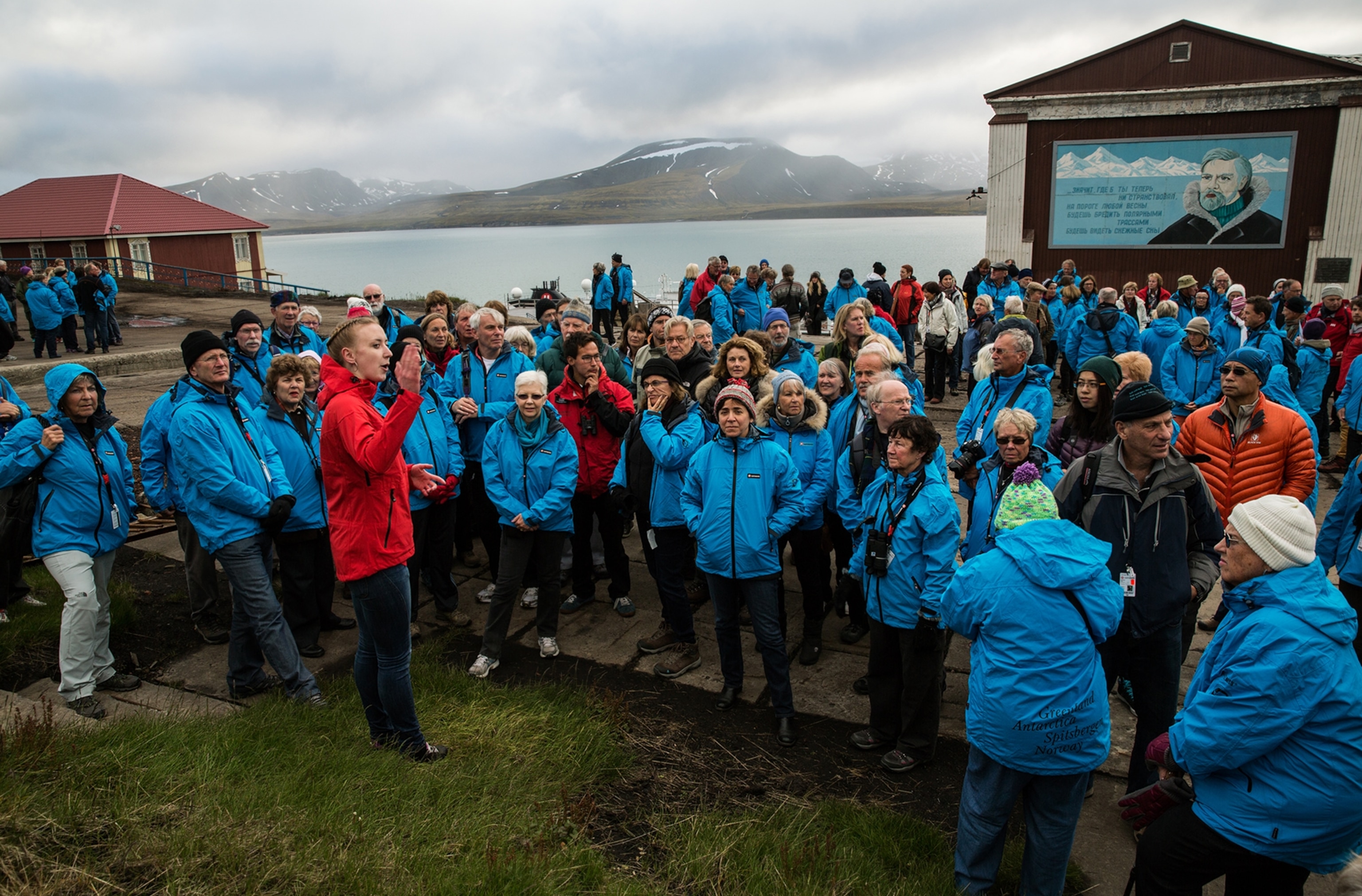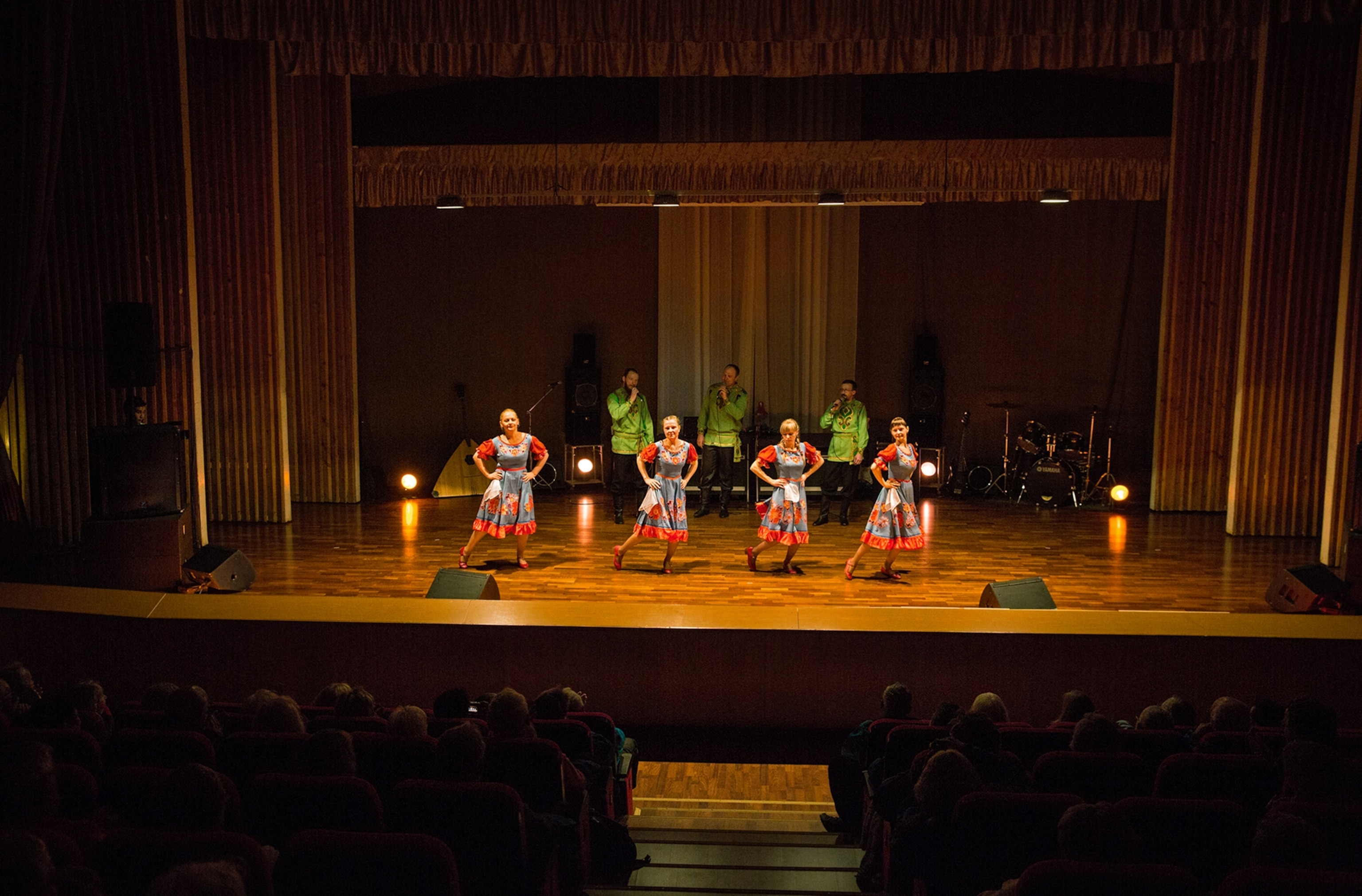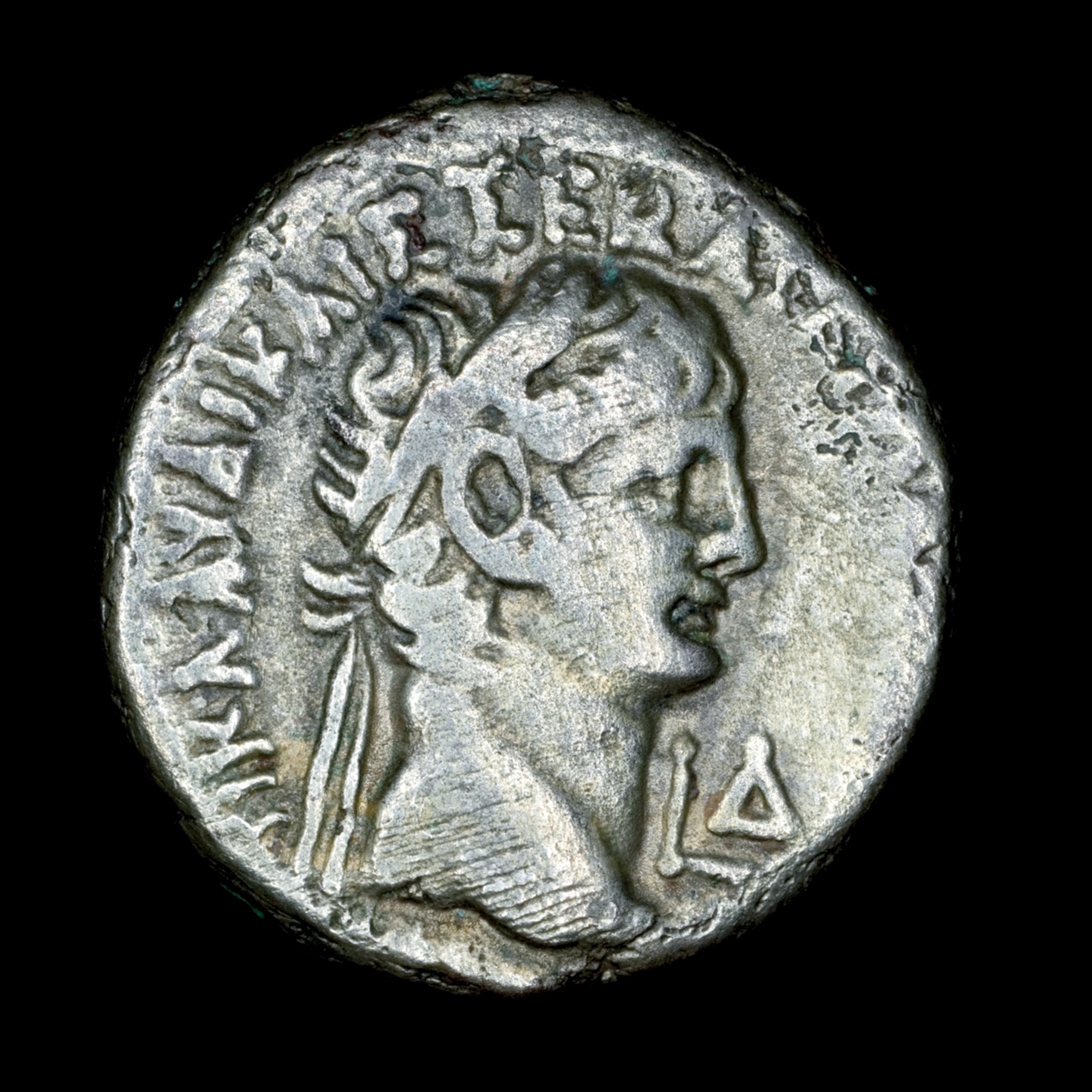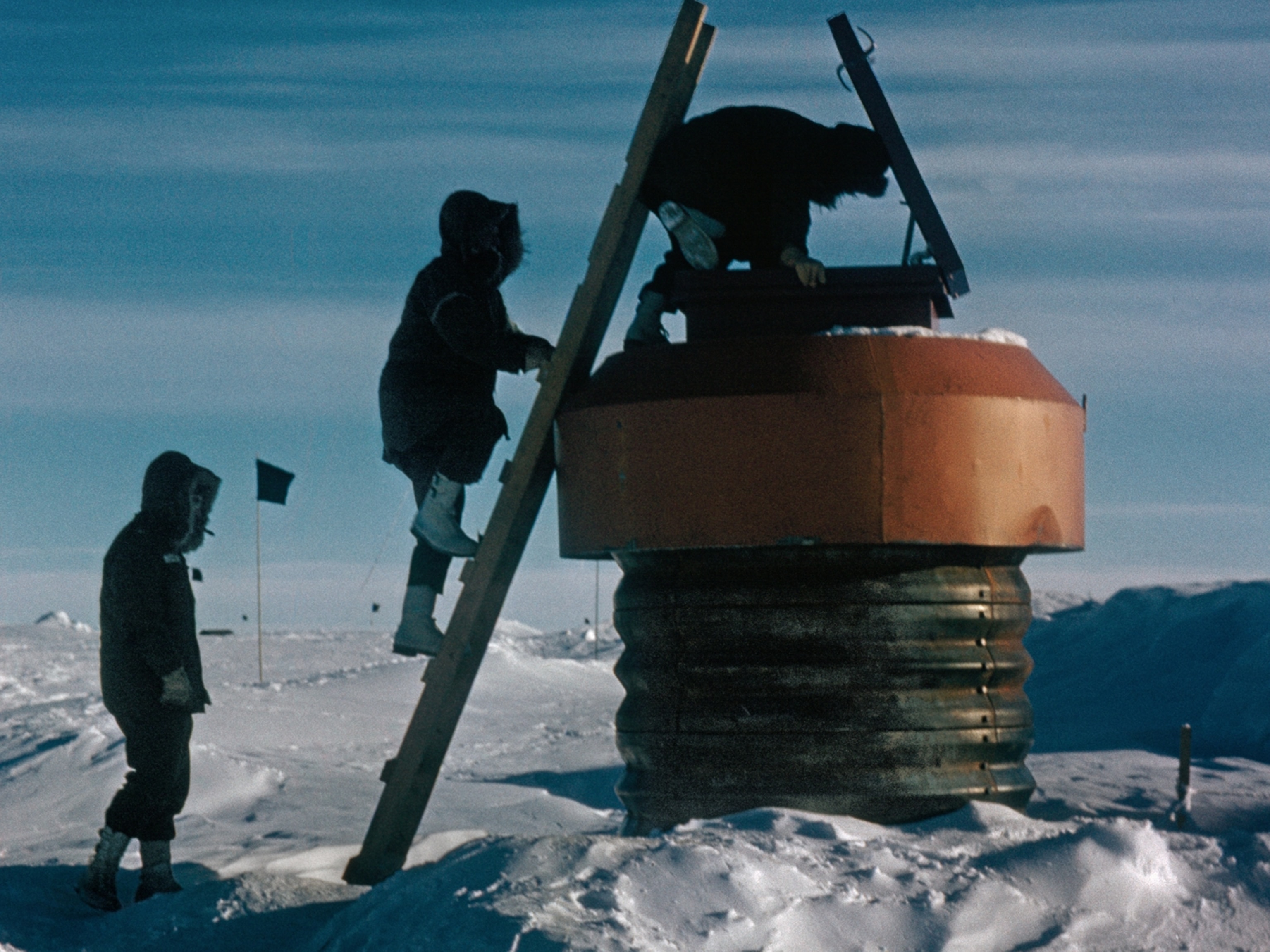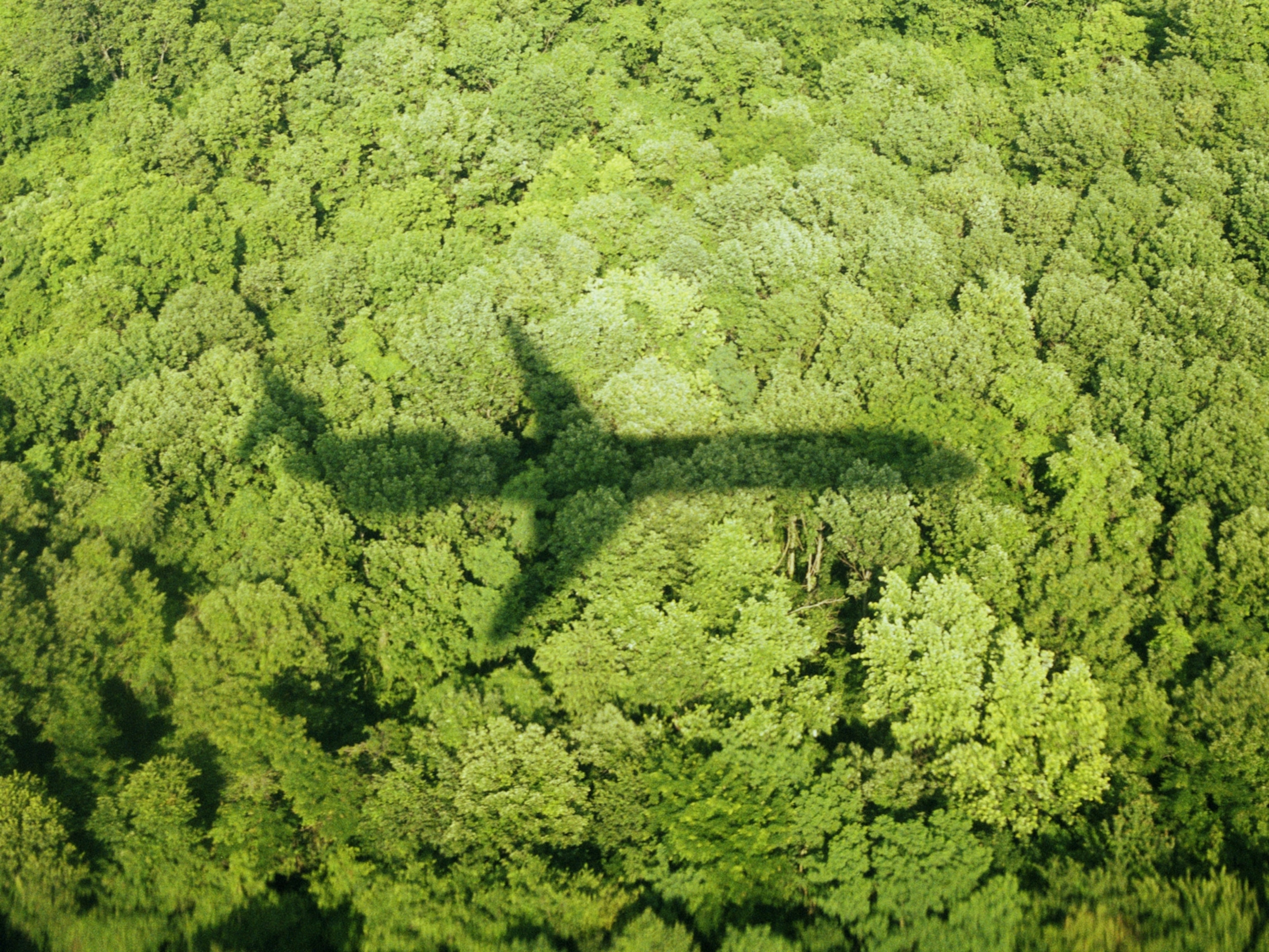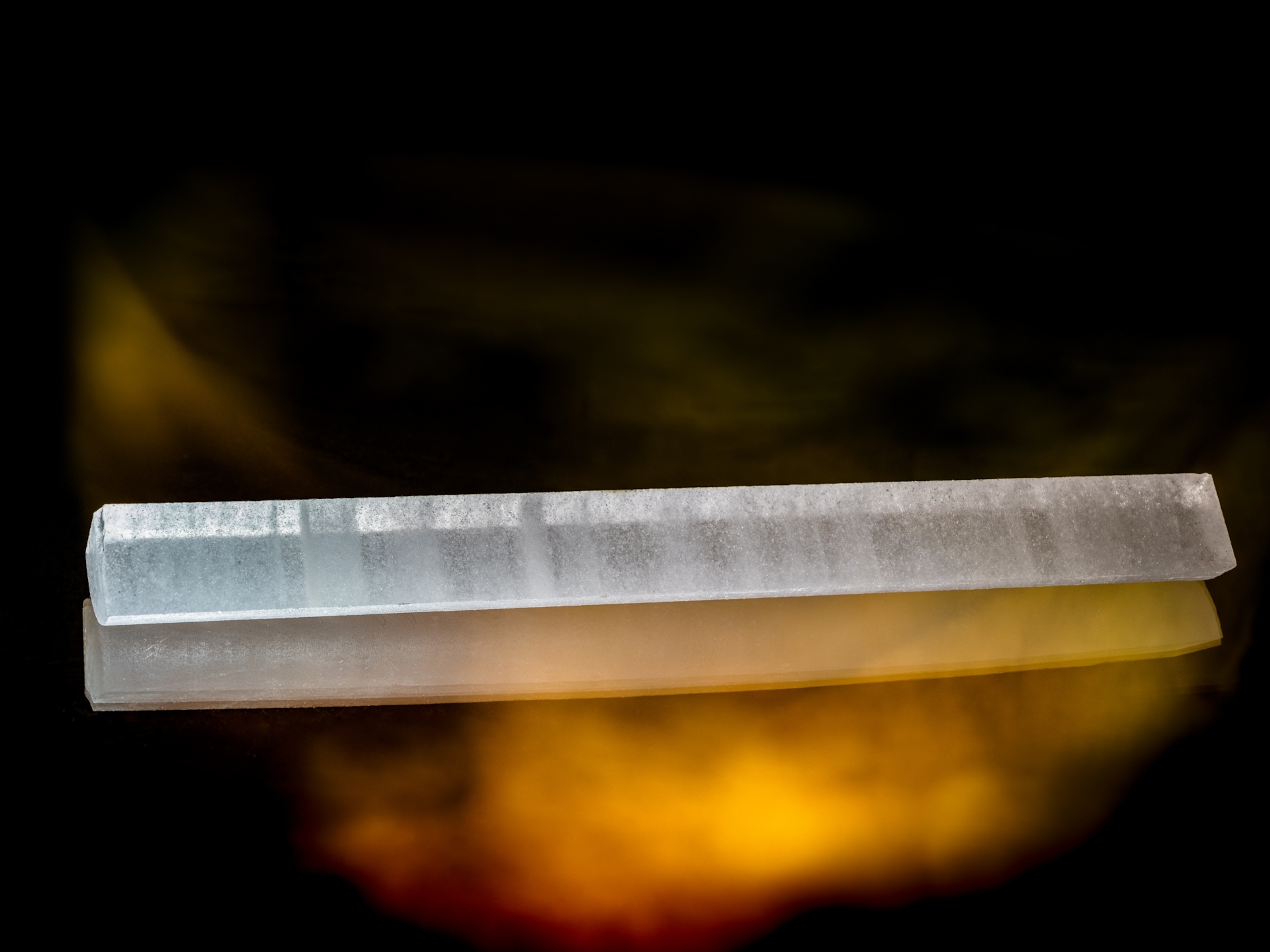
In the Arctic’s Cold Rush, There Are No Easy Profits
The thaw is escalating, but the race to tap resources from the top of the world remains brutal.
A few days before Christmas in 2014 a familiar face flickered to life in a conference room at Bovanenkovo, 250 miles north of the Arctic Circle on the Yamal Peninsula of Siberia. Vladimir Putin looked a little pixelated from the satellite uplink. Alexey Miller, CEO of Russia’s energy giant Gazprom, stood stiffly facing the screen and the Russian president. Outside the room the clusters of prefab buildings and shiny pipes were lit up like a space station floating in the darkness. Bovanenkovo is one of the largest natural gas deposits on Earth. Miller asked Putin for the order to start pumping from a new field there.
“You may begin,” said Putin.
Miller relayed the message; an engineer tapped a key. With that, Arctic gas began flowing down a 700-mile pipeline into Russia’s sprawling network. The Yamal Peninsula, a thumb of flat tundra jutting north into the frozen Kara Sea, was known until recently for its nomadic reindeer herders, the Nenets, and under Joseph Stalin for its brutal prison camps. But by 2030, Gazprom estimates, the region will supply more than a third of Russia’s gas production and a lot of its oil. Bovanenkovo is one of more than 30 known gas and oil deposits on the peninsula or just offshore. Yamal could become an Arctic Saudi Arabia funneling hydrocarbons to an energy-hungry world. Or so Putin hopes.
As global warming thaws the Arctic, Russia is leading the rush to exploit the region’s resources. In late 2013, on a platform in the Pechora Sea, Gazprom became the first company to produce oil offshore in the Arctic, after jailing 30 Greenpeace protesters and confiscating their ship. On the east side of Yamal a partnership led by another Russian company, Novatek, is building a giant terminal to liquefy gas and export it to East Asia and Europe by ice-breaking tanker—though over time there may be less and less ice to break.

Russia is not alone. More than a fifth of the world’s conventional oil and gas that has yet to be discovered lies above the Arctic Circle, according to a 2008 estimate by the U.S. Geological Survey, and the region is rich in other minerals too. Last year Norway anchored an oil platform in the Barents Sea even farther north than Gazprom’s platform. Canada is mining diamonds, gold, and iron in the Northwest Territories and Nunavut. And with the Siberian coast now ice free for several months each year, cargo ships have begun navigating along the Northern Sea Route between Europe and East Asia. This summer a large cruise ship, the Crystal Serenity, is scheduled to carry tourists through Canada’s legendary Northwest Passage.
The Arctic rush seems inevitable—and worrying. Thawing permafrost already is releasing planet-warming carbon into the atmosphere; if we want climate change to stay manageable, according to one recent study, Arctic oil and gas are high on the list of hydrocarbons we should leave in the ground. Environmentalists also fear the impact of development on a wilderness with spectacular wildlife. And many of the four million indigenous people who live around the Arctic worry about the threat to their way of life, though others welcome the jobs and tax revenues that development may bring.
Given the hype on both sides of the argument, what’s striking is how patchy the Arctic rush actually is. Few companies have dipped their toes into Arctic waters, and fewer still are making a profit. Last fall Royal Dutch Shell abruptly abandoned its multiyear, seven-billion-dollar effort to extract oil from the Chukchi Sea off Alaska after drilling a single unpromising hole. Record-low oil prices likely contributed to the decision. So did the astronomical costs of operating in a region where infrastructure is sparse, distances are huge, and the weather remains horrific.
Shortly before Putin opened the new gas field on Yamal, a large Korean factory trawler probing for pollack in the northern Bering Sea sank in heavy weather, taking more than 50 crew members with it. The closest Coast Guard cutter was 580 miles away in Dutch Harbor in the Aleutians. That same outpost is more than a thousand miles from Alaska’s north coast, where oil rigs have been operating—and a cruise ship will soon. “The Crystal Serenity will have 1,700 people aboard,” said Charles D. Michel, vice commandant of the U.S. Coast Guard, at a conference in Anchorage last year. “This keeps me up at night. As a Coast Guardsman, I don’t want a repeat of the Titanic on my watch. But [a rescue] would be a very complex operation. It’s a very difficult area with difficult weather.”
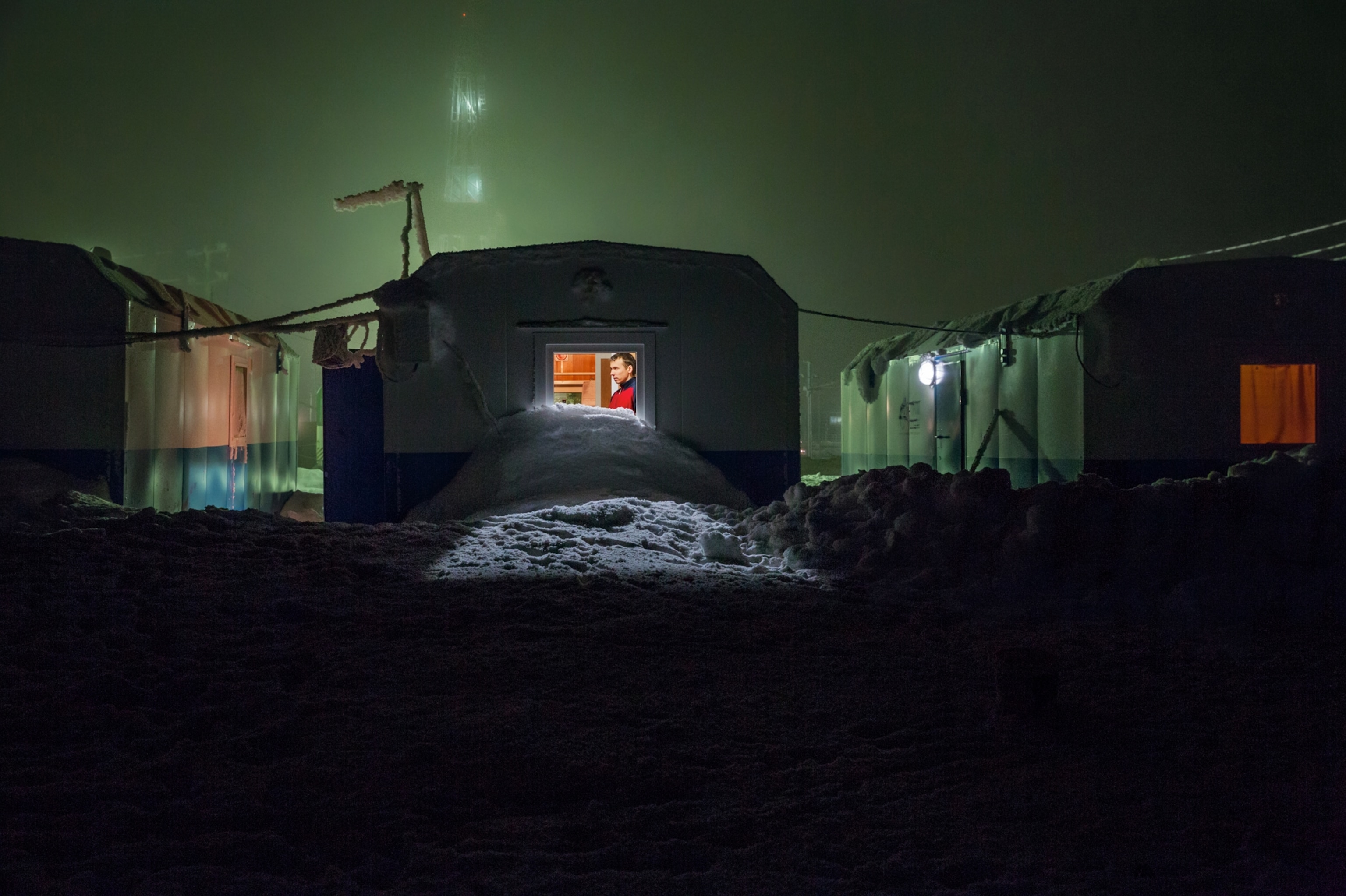
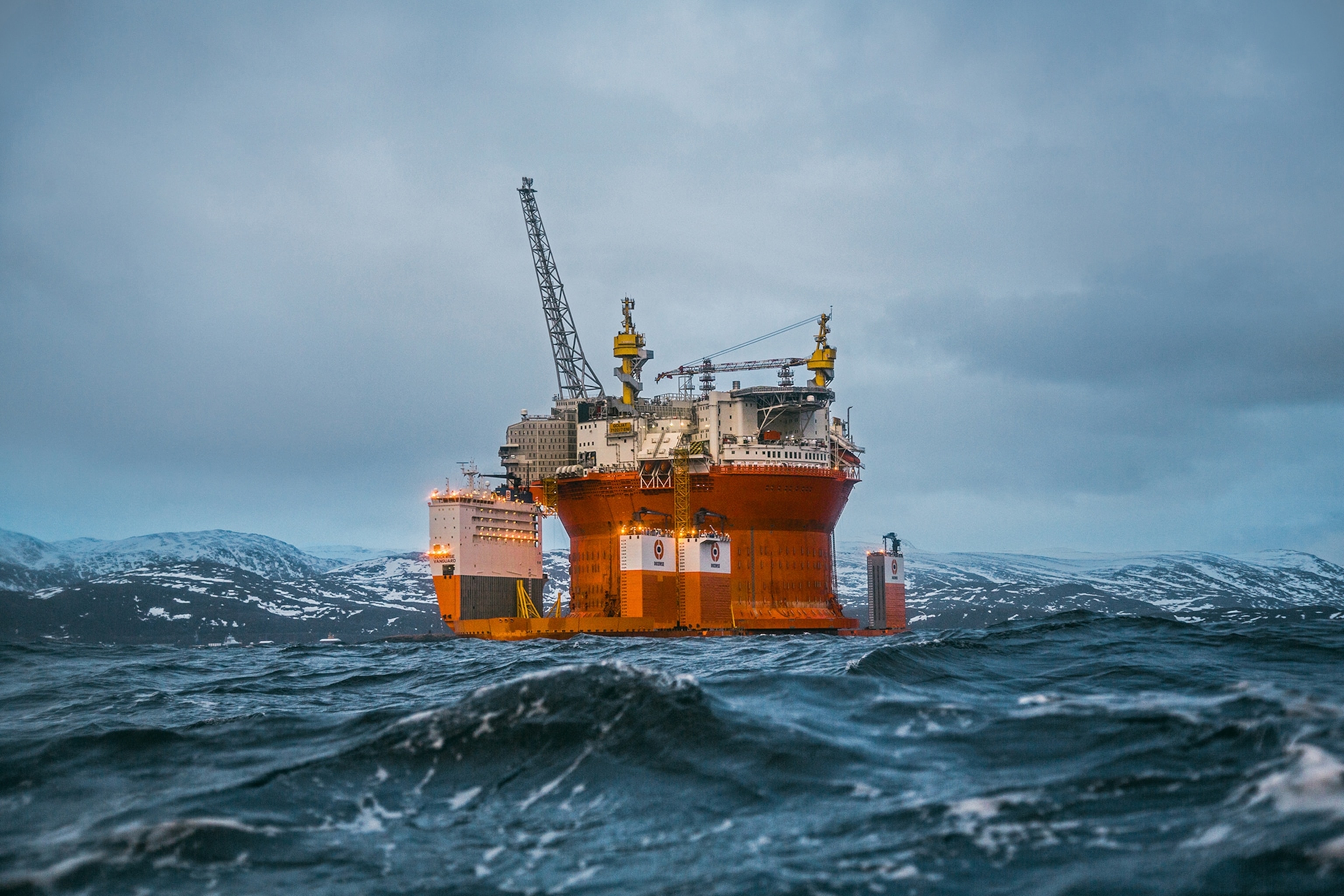
Russia: Manifest Destiny
On a snowy December evening, with the temperature at minus 4°F, a few dozen spitting and swearing gas-field workers shuffle around outside the trailers that pass for a railway station near Salekhard, capital of the Yamalo-Nenets Autonomous District. They’re waiting for a commuter train that will carry them deep into the Arctic. To get workers to Bovanenkovo, Gazprom had to build its own 355-mile railroad, including a two-mile-long trestle over the Yuribey River. The commute takes 24 hours, but some of the riders have traveled for three days just to reach Salekhard. In the field they live four to a room in cozy dorms, working 8 a.m. to 8 p.m. in month-long shifts. They have a gym, a game room, and a salt spa that’s supposed to help them recover from the dry Arctic air. When their shift is over, they head “back to Earth,” as if they were cosmonauts mining the moon.
“This routine is not for everyone,” says Pavel Dmitrievich Bugayev, a veteran commuter from Nizhniy Novgorod, a thousand miles to the southwest. “The job is difficult, but the pay is good and comes with many social benefits. My wife sometimes complains that life is hard without me, but it’s not like it used to be when I’d vanish for a month. We are now connected via the Internet and Skype.”`
Russia’s fascination with the Arctic and its potential riches dates at least to Peter the Great, whose desire to map the coast of Siberia led to the Great Northern Expedition of the 1730s and ’40s. Vladimir Putin is continuing that tradition of manifest destiny, going so far as to claim nearly half a million square miles of the Arctic Ocean. According to Russian oil and gas experts, he has little choice. Ninety percent of the nation’s estimated gas reserves and 60 percent of its oil reserves lie in the Arctic or subarctic.
“Russia’s current predicament is very simple,” says Konstantin Simonov, director of the Moscow-based National Energy Security Fund. “Gas fields discovered in the 1960s laid the foundation for Russia’s decades-long dominance of the global natural gas market. Now these Soviet-era giants are in decline. Moving farther north into the Arctic is the next logical step.”
It’s not an economical step right now, with oil and gas prices so low. “If you just looked at the economics of some of these projects, you’d never do it,” says James Henderson, a Russia scholar with the Oxford Institute for Energy Studies in England. “But Russia is focused on development of the far north, and the best way to do that is to encourage the oil and gas industries to go there.”
Bovanenkovo is the first big project on the Yamal Peninsula. The most ambitious project there is the liquefied natural gas (LNG) facility at Sabetta, on the Gulf of Ob. One of the world’s largest, it’s being built by Russia’s Novatek with the help of French oil and gas giant Total and the Chinese National Petroleum Company. The Russian government is contributing a deepwater port and the services of a few of the icebreakers in its enormous fleet—40 now and 10 more in the works—to assist the dozen ice-breaking LNG tankers that are being built for the project. Putin wants those tankers moving for as much of the year as possible. Even though the $27 billion project won’t come online until at least 2018, Novatek has presold a lot of the gas.
Russia is even more focused on Arctic oil. Production taxes and export duties on oil provide 40 percent of its government revenue (only 10 percent comes from gas), and its legendary oil fields in western Siberia are declining. So far, however, it has needed foreign technology and capital to drill offshore in the Arctic, and sanctions imposed after its intervention in Ukraine have temporarily shelved such projects. Gazprom’s Prirazlomnaya platform is the only one producing oil. But just before the sanctions took effect, ExxonMobil and Russian oil giant Rosneft drilled the world’s northernmost well, in the Kara Sea. They struck oil—an estimated 700 million barrels—but have capped the well for now.
There are no pipelines near these fields. The oil from Prirazlomnaya—some five million barrels so far—is siphoned off by shuttle tankers and sometimes transferred to other ships. This greatly increases the risks of spills, and Russia’s track record on land isn’t reassuring. According to local environmental groups, Russian companies have spilled more than three and a half million barrels of oil on the tundra.

Norway: Boom on the Barents
In September 2010 the M.V. Nordic Barents loaded iron ore at the Sydvaranger mine in Kirkenes, Norway, and sailed east to Shanghai. The first non-Russian commercial vessel to travel the Northern Sea Route, it was escorted by a Russian icebreaker, but it met little ice, never stopped, and averaged more than 12 knots. More important, it made money. The Arctic shortcut shaved a third off the route through the Suez Canal and saved $180,000 in fuel alone.
In 2013 a Chinese container ship, the Yong Sheng, beat the travel time through Suez by nearly two weeks, sailing from Dalian to Rotterdam in a record 35 days. Some claim the long-sought Arctic sea route is finally a reality.
“I was in a meeting with the general director of Atomflot [Russia’s ice-breaking fleet] a few years ago,” says Felix Tschudi, whose company, Tschudi Shipping, organized the pioneering voyage of the Nordic Barents. “He was a big man, and he said, ‘We want to compete with Suez!’” The Russian slammed a meaty fist on the table.
That’s wishful thinking, Tschudi says. More than 17,000 ships pass through the Suez every year, compared with 19 full transits of the Northern Sea Route in 2013. Even as Arctic ice retreats, ill winds still blow floes and “growlers”—small icebergs—into sea-lanes, causing costly delays. The Russian route is free of pirates at least. But it’s still too seasonal and too far north for the bulk of the world’s trade.
It’s a direct route, however, to and from Siberia itself. Tschudi’s company has transferred Siberian oil from ice-breaking shuttle tankers to traditional tankers at Kirkenes; it has delivered crushed stone to the LNG construction site at Sabetta. That’s the model for Arctic shipping, Tschudi says: Bring natural resources out of Siberia, and send building materials and consumer goods deep into the region via its rivers. So confident is Tschudi that he bought the Sydvaranger mine mostly for its port. He sees it becoming the Rotterdam of the north.
Meanwhile the old fishing town of Hammerfest, 160 miles west of Kirkenes, has become the center of Norway’s own Arctic oil and gas ventures in the Barents Sea. Statoil, the Norwegian oil and gas company, built Europe’s only LNG facility here in 2007. It receives gas from three offshore fields through an 89-mile-long undersea pipeline.
“Hammerfest was on its way to being a ghost town,” said the cabdriver who picked me up at the airport. “Our history is now divided into the time before the gas plant and the time afterward. The day they started building it, every stairway in town had a person on every step.”
The day I arrived was another big one for Hammerfest. The harbor was full of ships waiting to tow what appeared to be a round orange island out to sea. The Goliat platform, which belongs to the Italian oil company Eni and Statoil, has since dropped anchor at 71 degrees north—53 miles northwest of Hammerfest and 140 miles closer to the North Pole than Russia’s Prirazlomnaya platform. Twenty-five stories tall, Goliat can pump 100,000 barrels of oil a day and store a million barrels in its bright orange hull until tankers retrieve it. Thanks to the Gulf Stream, this part of the Barents Sea stays largely ice free, leading Eni officials to dub it the “workable Arctic.” But the platform still has to withstand hurricane-force winds and 50-foot waves. Its novel round hull bobs like a cork.
Eni has contemplated a string of Goliats tapping even larger fields farther north in the Barents—but the price of oil has undermined that vision. Goliat cost $5.5 billion and was $1.3 billion over budget. Industry analysts estimate the company needs an oil price of $95 a barrel—roughly double the price in late 2015—to break even. Frederic Hauge, founder of the Bellona Foundation, a Norwegian environmental group, hopes low oil prices will scuttle Eni’s grand plans and other offshore projects in the Arctic. There’s still no good way to clean up oil spilled in Arctic waters, he says.
Most residents of Hammerfest, however, seemed glad to have the Goliat out there. The town was booming, with new, brightly colored apartment buildings, schools, and a cultural center. Fishermen worry more about an invasion of cod-egg-eating crabs than about an oil spill from the Goliat, says Jacob West, leader of the fishermen’s union. Eni has trained 30 local captains to skim oil if necessary. “This is our garden,” West says. “We know the area and the weather, so fishermen are the best to do the job.”
The day I left, he and his colleagues were scheduled to conduct a large oil-spill drill. It was canceled because of bad weather.
A Soviet Time Capsule in the Arctic
Canada: A Gold Mine for Nunavut
The Meadowbank gold mine, northwest of Hudson Bay in the sprawling territory of Nunavut, is one of the coldest mines on Earth. Shortly after it opened in 2010, workers were loading a house-size dump truck with ore when the massive frame cracked. Apparently even steel beams as big as tree trunks get brittle when temperatures drop below minus 40°F.
It was nearly that cold when I arrived last March in a van full of mine workers from Baker Lake, the nearest settlement. In the middle of the two-and-a-half-hour drive, the van pulled over to let its passengers have a bathroom break and a smoke. A treeless, boulder-strewn field of snow stretched to the horizon. The slight breeze stung like invisible sleet. Even a nonsmoker could see the appeal of a small fire in front of one’s face. But deep breaths of any kind, or exposing sensitive bits of one’s anatomy, seemed like a bad idea. The week before I arrived, a blizzard had cut off the mine for three days. Arctic warming hasn’t helped much at Meadowbank.
The cold isn’t the only challenge. One night in 2011 a hungry wolverine burrowed beneath the camp kitchen to get at the grease. The ensuing electrical fire burned down the cafeteria, slowed mining significantly for weeks, and caused U.S. $18 million in damages. But the utter lack of infrastructure and energy was the biggest hurdle, says Sean Boyd, CEO of Agnico Eagle, the Toronto-based mine owner. Agnico Eagle had to build an airstrip capable of landing a Boeing 737 at Meadowbank and a 65-mile, all-weather road to the mine. When something big breaks, such as a hundred-ton truck, Agnico Eagle has to charter a C-130 Hercules to fly in massive parts or wait for Hudson Bay to thaw in summer.
“We underestimated the work and the cost of the logistics involved in building something in the middle of nowhere,” Boyd says. “It ended up being double our initial estimate. Energy is a huge component of the cost.” The mine, he explains, burns 9 to 12 million gallons of diesel a year in six 6,000-horsepower generators. Tanker trucks deliver the fuel daily from Baker Lake, where it arrives by barge each summer through Hudson Bay.
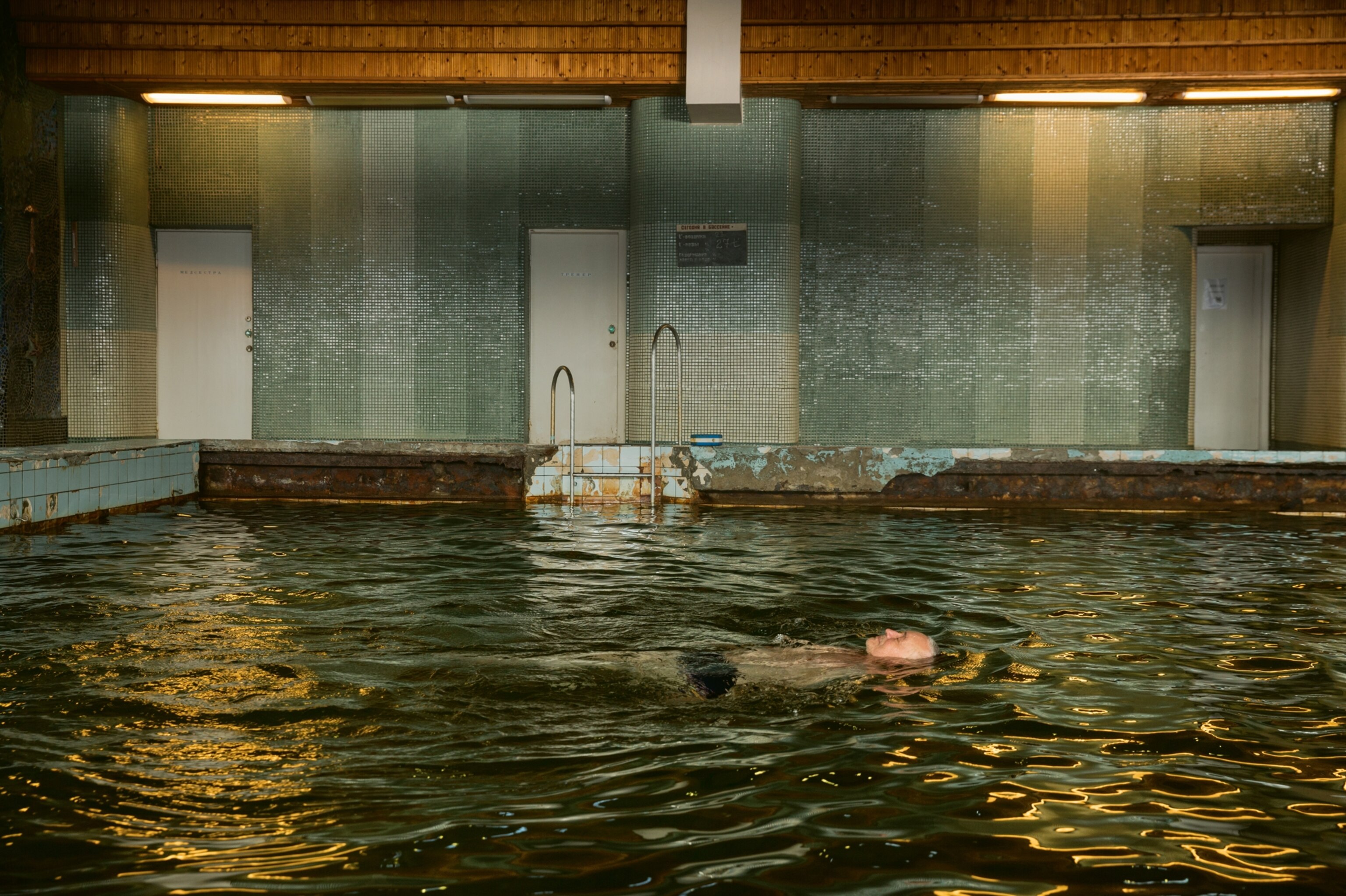
The mine itself occupies nearly six square miles. During the brief Nunavut summer its three open pits become inverted islands, below the deep indigo lakes that surround them and protected by an earthen dike. The lakes are full of trout, arctic char, and grayling. Mining waste rises in a 200-foot-high mesa. After it’s capped with 13 feet of clean soil, the mine’s engineers say, the waste mountain will freeze permanently, preventing acids and heavy metals from leaching into the lakes during the sparse summer rains.
Though Meadowbank’s ore contains three times the gold concentration of most open-pit gold mines, by 2013 the company had lost more than a billion dollars on the venture and had only five more years of ore left to mine. A new find about 35 miles away may extend the operation another decade and allow it to turn a profit.
But like Hammerfest, Baker Lake, population 1,900, has benefited. In the 1950s the Canadian government relocated many Inuit to villages like Baker Lake to provide them schools, health care, and other services. The transition hasn’t been easy. Many Inuit live on public assistance, with two or three families sharing a two-bedroom house. A third of Nunavut’s population of 40,000 doesn’t get enough to eat, according to a 2015 Canadian government report. Alcoholism, drug abuse, and sexual assault are common. The suicide rate among young men is 40 times the Canadian average.
Local leaders say turning Nunavut into Canada’s new mining district could help. An iron mine opened on northern Baffin Island in 2014, and elsewhere in Nunavut diamond, gold, and uranium mines are planned. Mines offer plenty of jobs for unskilled workers, from housekeepers to cooks to truck drivers. Before Meadowbank came to town, the unemployment rate in Baker Lake was 30 percent. Today almost anyone who wants a job can find one; the mine employs some 300 Inuit.
“Resource development has done more for my community than I ever could imagine,” says Peter Tapatai, a 63-year-old businessman from Baker Lake who handles transportation for the mine. “When you see a young man and woman working, they’re now part of Canada. They are breadwinners. Our people had no future other than lining up to get welfare checks. Now every Thursday they line up for a paycheck.”
Linda Avatituq, a 39-year-old single mother and grandmother, went to work in the mine three years ago. She had driven only a snowmobile before she took a job driving a massive yellow truck that hauls gold-bearing rock out of the pit. The job pays $80,000 a year. “My life changed a lot after I got the job,” Avatituq says. “I sobered up after that. I can support my family and my grandkids. My grandson is six years old. He wants to be a pilot.” Tears roll down her cheeks. She misses him when she’s at the mine.
A lot of Inuit and their families have trouble adjusting to the work schedule—two weeks on, two weeks off. The mine has hired counselors, and it sponsors square dances, badminton tournaments, and mine tours for spouses. Some workers, particularly young single women, have fled Baker Lake for the brighter lights of Winnipeg or Calgary. They fly in for their shift every two weeks just as their non-Inuit co-workers do.
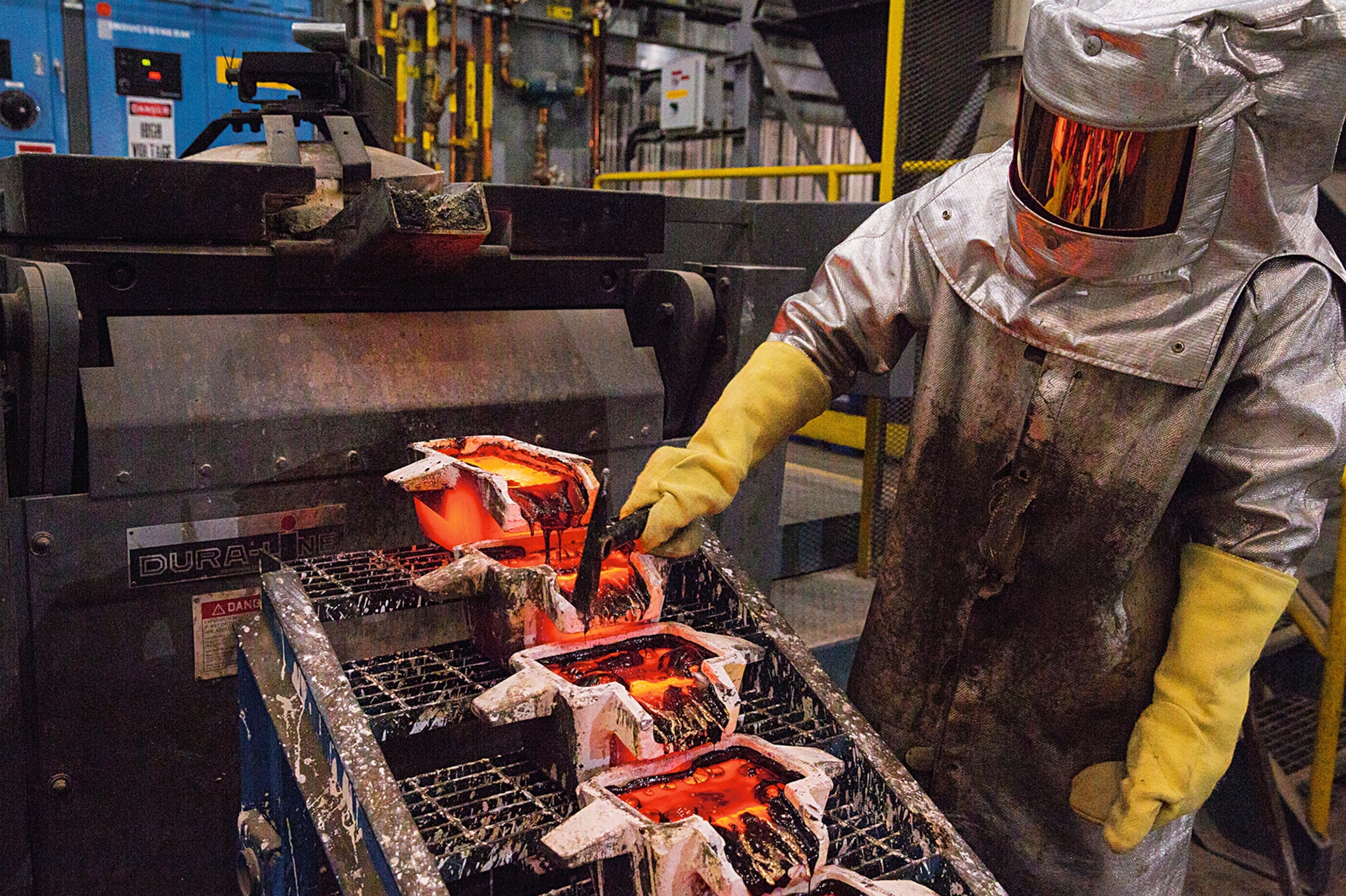
Before I left the mine, I watched a gold pour. Metallurgists in white, heat-resistant suits and hoods slowly spilled the lavalike metal from a crucible into six molds, where it would cool to form silvery yellow bricks, each weighing 26 kilos (57 pounds) and worth about $700,000. “Who was the first person who decided gold was a valuable thing?” wondered a thoughtful mill operator. Over the centuries gold mines have dispossessed aboriginal people and wreaked ecological destruction all over the planet. This modern industrial mine dropped into the Arctic wilderness may be different, but even local supporters worry whether it will ultimately be a boon or a burden for the people of Nunavut.
“I can’t imagine what my own child is going to do,” says Alexis Utatnaq, an instructor at the local community college who prepares students for jobs at the mine. “Are we going to have more teachers and doctors, or are we all going to be miners? Will anyone still know how to hunt?”

Alaska: The Well That Wasn’t
The U.S. Army Corps of Engineers’ permafrost tunnel is a Cold War relic, a short mine shaft dug into a hill north of Fairbanks where researchers once studied ways to hide missiles. Today it’s an uncanny record of Alaska’s past climate, showing periods of freezing and thawing dating back more than 40,000 years. Hand-painted signs point to mastodon femurs, horns of steppe bison, and blades of grass as green as the day they froze 25,000 years ago. It smells like an ancient barnyard.
“That’s the carbon bomb, baby,” says permafrost researcher Thomas Douglas, referring to the pungent bouquet of thawing yedoma—old, carbon-rich permafrost. The world’s permafrost contains as much as 1,600 gigatons of carbon, twice what’s in the atmosphere. As permafrost thaws, it releases carbon, amplifying climate change. Near Bovanenkovo scientists recently discovered several large craters, some more than 200 feet deep, that may have been formed by methane erupting from thawing permafrost.
“This is what everyone is worried about,” Douglas says. “The most recent paper estimated that 10 to 15 percent could be emitted by 2100. But 240 gigatons is still a crapload of carbon.” Such an outgassing could make Alaska—and the rest of the world—a very different place.
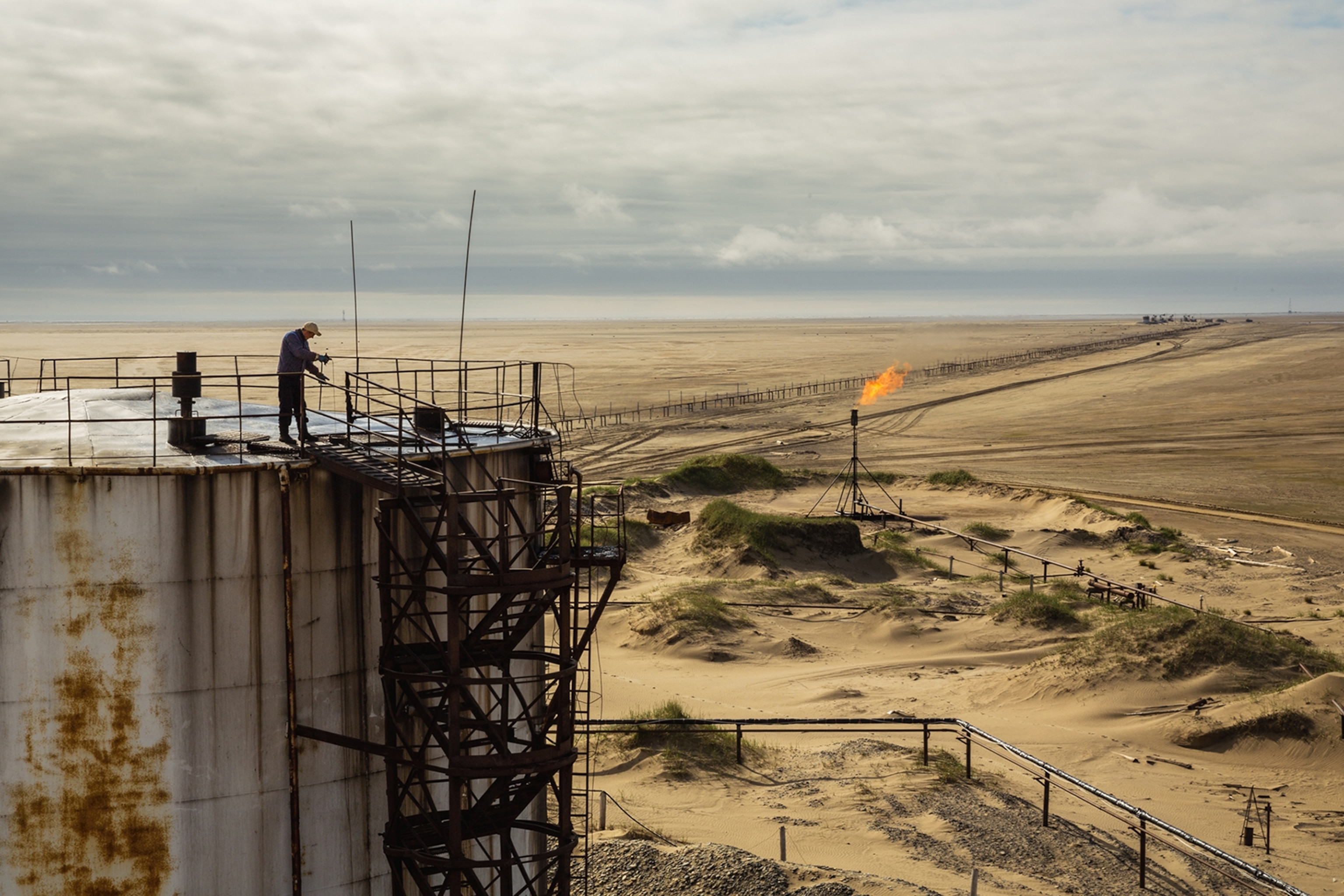
Alaska is already changing fast. Thawing permafrost is undermining roads and buildings. Last summer 700 wildfires scorched five million acres of boreal forest in the worst fire season in decades; even treeless tundra caught fire. The loss of sea ice that has made offshore oil exploration easier also has exposed Alaska villages to powerful storms, flooding, and coastal erosion—more than 60 feet a year in some spots. A 2009 federal report estimated that 31 Alaska villages faced “imminent threats.”
Wainwright, a base for Shell’s operations in the Chukchi Sea, isn’t one of them. But Enoch Oktollik, chief of maintenance at the local school and a former mayor, says the change is still obvious. “The last ten years you could notice it,” he says. “Young ice develops, but multiyear ice is depleting. Walruses are coming ashore by the thousands at Point Lay, because they’re losing their ice habitat. Our grass around here is getting taller and greener. It’s sort of alarming to see all these interactions.”
When Shell abandoned its hunt for offshore oil in Alaska last year, environmental groups celebrated. “Big oil has sustained an unmitigated defeat,” a Greenpeace leader told the Guardian, adding that “the people won.” Yet the people of Arctic Alaska were decidedly torn. After decades of opposing offshore drilling to protect the bowhead whale hunts, which are among the last pillars of their ancient culture, many North Slope residents, including Oktollik, ultimately supported Shell’s venture for the jobs and tax revenue it could bring. “I’d rather see no development, but we have no choice,” Oktollik says.
What about climate change? I ask.
“The Inupiat have been adapting for thousands of years,” he says, smiling. “We’ll adapt to climate change.”
How did the Arctic environment influence this assignment? The darkness of winter nights was definitely a challenge. With only two hours of daylight, I had to plan every day wisely. Also, on one trip I had to wait a week for a blizzard to pass so I could safely helicopter to a gas field.
You can follow Gleb Raygorodetsky on Twitter.
